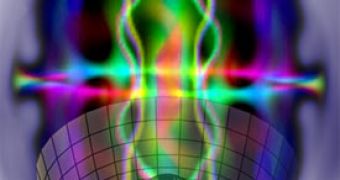A new experiment performed in the US has proved that a Bose-Einstein condensate can exist in polaritons, a cooled system of particles. This is not the first time scientists claim to have the proof of its existence, but in similar previous applications many suspected that the coherence was in fact the effect of the laser beam used to create the polaritons and not true condensates.
By accumulating the polaritons away from the laser beam, the new experiment claims to have removed any doubt on the formation conditions.
A Bose-Einstein condensate is a consequence of quantum mechanics by Albert Einstein, a state of matter formed by bosons cooled to temperatures very near to absolute zero (0 Kelvin or -273.15?C). Under such supercooled conditions, a large fraction of the atoms collapse into the lowest quantum state, at which point quantum effects become apparent on a macroscopic scale.
Polaritons are bosons made up of an electron-hole pair and a photon that are able to form a BEC at a much lower temperature, using a laser to steadily increase the density of polaritons in a semiconductor microcavity kept at the relatively warm temperature of 19 K.
David Snoke and colleagues from the University of Pittsburgh and Bell Labs in the US have attempted to perform a new experiment that would prove the behavior exists even out of the region excited by the laser beam, which is coherent itself and which spawned previous doubts.
They created a system in which the polaritons produced by the laser subsequently migrate away from the laser's excitation, using a sharp, 50 microns across, pin to produce an inhomogeneous stress on the microcavity, which formed a trap that the polaritons could accumulate in.
Snoke thinks the experiment could be pushed even further, to increase the condensation temperature to 32 K. "There is plenty of reason to expect we can go even higher?I would not predict room temperature, but over 100 K is not out of reach for us."

 14 DAY TRIAL //
14 DAY TRIAL //